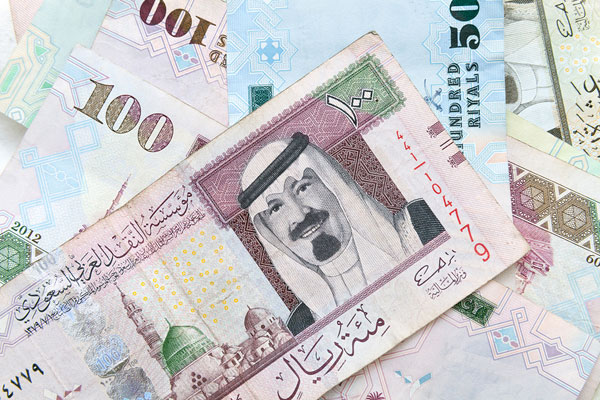
Sama facilities will support banks’ profitability.
Saudi banks ‘to benefit from cbank liquidity support’
RIYADH, October 2, 2016
The Saudi Arabia Monetary Authority (Sama), the country’s central bank, recently announced that it would provide Saudi banks with about SR20 billion ($5.3 billion) of time deposits on behalf of government agencies, a report said.
The Saudi Arabia Monetary Authority (Sama), the country’s central bank, recently announced that it would provide Saudi banks with about SR20 billion ($5.3 billion) of time deposits on behalf of government agencies, and introduce seven-day and 28-day repurchase agreements, a report said.
These moves follow prior deposit injections of approximately SR12 billion since the start of the year and are credit positive for Saudi Arabia’s banks, which continue to face pronounced liquidity pressures as a result of recent deposit outflows, a consequence of depressed oil prices, explained the research from Moody’s Investor Service.
Since oil prices plunged in 2014, liquidity trends in the Saudi banking system have reversed. Instead of excess liquidity, reflected by customer deposit growth of 12.1 per cent versus 11.8 per cent growth in credit (defined as claims to the private sector, which include loans, advances and investments) between 2013 and 2014, Saudi banks have experienced the opposite trend in recent years: since 2014, average deposit growth has decreased to 1 per cent versus credit growth of 9.5 per cent.
Liquidity has tightened even more since February 2016, when deposit outflows led to a 3.1 per cent year-on-year contraction in total deposits as of 30 July 2016. Government deposits as of July 2016 were down 4.4 per cent from a year earlier because funds were needed to help finance its large fiscal deficit, which we estimate at around 12 per cent for 2016.
Private-sector deposits also declined and were down 2.6 per cent year on year as of July, adversely affected by government spending cuts and weakening economic growth. “We expect Saudi Arabia’s non-oil GDP growth to be 1.6 per cent this year and 2.4 per cent in 2017, versus the 2010-16 average of 6.2 per cent,” Moody’s said in the report.
Sama’s SR20 billion injection of time deposits adds to an approximately SR12 billion provision that was extended as short-term deposits and loans to a number of banks earlier this year. These measures should help stabilize banks’ regulatory loan-to-deposit ratio for the next six months, which we expect to decrease 100 basis points to around 84 per cent as of September 2016 from 85 per cent in June 2016. Earlier this year, Sama had increased its maximum loan-to-deposit ratio guidance to 90 per cent from 85 per cent.
In addition, Sama announced that it would now provide seven-day and 28-day repurchase agreements in addition to one-day repo agreements. When combined with a robust stock of liquid assets to total assets of around 25 per cent, these repurchase facilities will allow banks to access short-term borrowing at a lower and more stable cost than available in the challenged wholesale markets. This will reduce their funding costs, which, as reflected in the three-month Saudi Interbank Offered Rate (SAIBOR) of 2.35 per cent on 27 September, are at their highest since January 2009.
Although the majority of banks continue to rely on funding from non-interest-bearing deposits (around 63 per cent of total funding as of June 2016), recourse to more expensive and confidence-sensitive wholesale market funding has increased in recent months to 7.9 per cent as of June 2016 from 6.1 per cent as of December 2015, commensurate with the contraction in total deposits available in the system.
Despite the likelihood of continued pressure on banks’ cost of funding into 2017, these Sama facilities should also support profitability. – TradeArabia News Service







